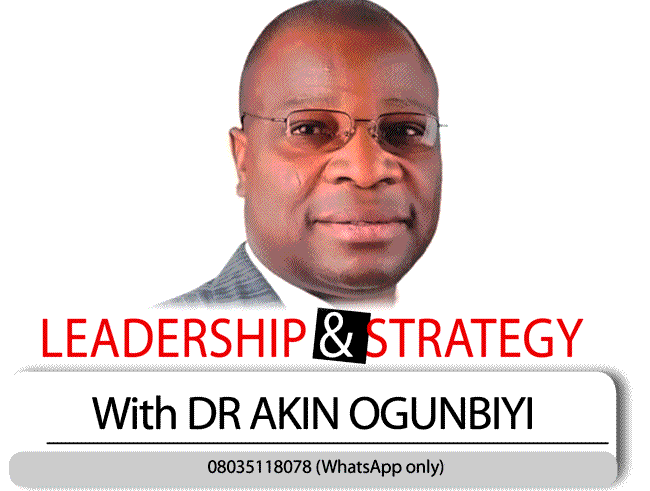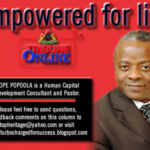An entrepreneurial idea often morphs into a unique product and has unlimited capacity for growth. Creative ideas keep evolving and expanding as the entrepreneur keeps imagining possibilities and undertaking responsibilities. The entrepreneurial spirit gets an entrepreneur prepared for the sprint to the minimum marketable product from the minimum viable product.
A product idea has unlimited capacity for expression; possibilities for improvement and incremental innovation are the norms of an healthy product. However, when taking an entrepreneurial idea from indoors to industry, that is, transforming a creative idea into a finished product, there has to be what is referred to as the minimum viable product.
The minimum viable product, or MVP, is the simplest version of a product that you need to build to sell it to a market. The concept of the minimum viable product, or MVP, was first introduced by Lean Startup genius Eric Ries. He defines the MVP as: “The version of a new product which allows a team to collect the maximum amount of validated learning about customers with the least effort.” An MVP is a product prototype expressing its tangibility, operations and reality. Although, an MVP is not a perfect product, yet it is a finished product in its simplest form.
The importance of an MVP
- Development of core features – The basic features of a product are developed without unnecessary complexity which helps focus on the core value proposition as well as addresses the essential needs of the target audience.
- Market validation – Having the simplest version of a product can help businesses predict the market success of a product. The basic features of an MVP are its unique value propositions which can either be deemed acceptable or not at this stage. This early testing helps in making informed decisions for future development.
- Cost efficiency – The minimum viable product can help minimize initial development costs and reduce the risk of investing in a product that may not be wanted by customers.
Evolving beyond MVPs
The concept of the MVP has evolved to more elaborate and refined solutions, like the Minimum Lovable Product (MLP) or Minimum Marketable Product (MMP).
The Minimum Lovable Product (MLP) is a Minimum viable Product (MVP) that has been tested okay and acceptable by the customer as a product that offers tangible utility. An MLP has gone beyond just being a prototype, but a product. Although, an MLP may not yet be marketable due to some imperfections, yet, it is a full-blown product with market potential.
With an MVP, the priority is getting to market as fast and affordably as possible. With an MLP, the priority is delivering the highest value to the customer. Do you have an MLP? If yes, don’t wait until you have a perfect product before you launch. Once you get it right conceptually with respect to product necessity, then you will definitely get it right commercially with respect to product lovability and customer loyalty which are often demonstrated by purchase and repeated purchase respectively.
A Minimum Marketable Product (MMP) is the next stage, where your MVP or MLP is ready to be sold to the end user. The MMP is the simplest product that the market will accept before new features are built. With an MMP, you’ve developed your product and proven its value to the customer through MVP testing. Rather than a prototype like the MVP could be, the MMP is ready to hit the market for early adopters.
In the early 90s, Jeff Bezos read that the e-commerce industry would be the next big venture in sales and took the opportunity to discover which markets would be most successful. He eventually landed on a bookstore as the minimum viable product, which he ran from his garage. The success of his bookstore led to the demand for other products, like electronics, clothing, and shoes. It was his first step—using books as the MVP—that gave him the customer insight to take Amazon to the next level. Who would have thought that a small bookstore on a basic webpage would expand to the third-largest enterprise in the world in just 20 short years?
Yes, the ride-sharing app we all know and love didn’t start as a mobile app. In fact, founders Garret Camp and Travis Kalanick took advantage of the idea of an MVP to develop an iPhone-only SMS service called UberCab in San Francisco. They tested the user experience and refined it within the city before they were able to gather venture capital and build the app that services 19 million trips around the world each day.
Uber has gone through various iterations, increasing its scope year by year using the feedback collected from its customer base. While UberCab launched with just taxis, Uber in its second wave incorporated black cars and independent contractors as drivers to build the ridesharing experience we all know and use today. Through various iterations, we’ve seen Uber expand way beyond the MVP to include pooled rideshare, accessible ride options, and in some small markets, even helicopters.
In 2006, streaming services were starting and failing over and over again due to limited and low-quality libraries, high subscription prices, and unstable streaming. So Daniel Ek and Martin Lorentzon built Spotify as a landing page where they could test their streaming technology to beta users and fund it with on-page ad revenue. Their ultimate goal was to make playback fast and stable so they could convince music labels and investors of the product’s quality. Once they got through market testing, Spotify and its subsequent app was released to the public to become the streaming behemoth we now know.
Customisation Vs. Personalisation
Customisation refers to the action of altering a product or service to suit a person’s or company’s preferences or requirements. We can also use the term when we modify something for a specific task. In other words, we can use it when focusing either on customers or functions.
If something is customized, it is similar to saying that it is tailor made, custom made, bespoke, or made-to-order (but not exactly the same).
“Product customisation is the key to serving your customer base successfully. Not all of your customers want the same thing or use your product the same way.”
“Product customization is essential for delivering a personalized customer experience to each segment of users, and can drive customer loyalty and increase customer satisfaction.”
Personalisation is when you decide what to alter, while customization, on the other hand, is when the customer tells you how to adapt your product or service.
For example, custom band merch allows fans to choose specific designs and features, aligning the merchandise with their personal preferences and enhancing their connection to the band.
Customisation empowers consumers to be part of the creative process, fostering a deeper connection with the product and enhancing overall satisfaction.
Minimum Viable Product (MVP): What is it & Why it Matters
What is customisation? Definition and examples – Market Business News
READ ALSO: Everybody loves entrepreneurs






